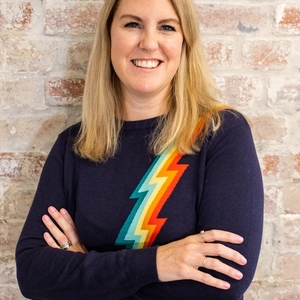Insights
INSIGHTS
All Topics
How to safely return to physical fundraising
27 Aug 2021by kirsty marrins
As the UK opens up, we look at how charities can ensure the safety of staff, volunteers, and the public
With England ending lockdown on 19 July 2021, Wales ending formal social distancing rules on 7 August, and Scotland ending COVID-19 restrictions on 9 August, the UK is slowly starting to open up again and returning to some sort of ‘normal’. This will be welcome news to charities, who will be eager to resume physical fundraising, in order to raise funds and potentially plug a funding gap caused by the pandemic.
Some charities have already started physical fundraising, whether that’s door-to-door or street fundraising, and many are looking to follow in their footsteps. It’s important, however, that charities ensure that they are returning to physical fundraising in both a safe and responsible way.
Remember that while we may be out of lockdown, COVID-19 has not gone away and charities must ensure that they are doing everything possible to prevent the spread of the virus – keeping staff, volunteers, and the public safe.
Five things to consider when returning to physical fundraising
Undertake a thorough risk assessment
Your risk assessment should take into account the type of physical fundraising you are undertaking, such as bucket collections, and any potential risks that may arise as a result of that activity to the public, staff, and volunteers.
It should also include the possibility of someone being exposed to, or contracting, COVID-19 as a result of that activity and what actions you need to take to reduce or remove the risk.
Be sure to consult with staff and volunteers on health and safety when undertaking the risk assessment. The Health and Safety Executive has guidance on their website on risk assessment during the pandemic.
Provide training for fundraisers
Before resuming physical fundraising activities, be sure to provide appropriate training for staff and volunteers. Not only will this give them confidence, it will also ensure that their safety and that of the public is front of mind.
New rules and guidance will need to be clearly communicated with staff and volunteers, through virtual training as well as through resources they can either access online or download.
Ensure hygiene practices remain in place
To minimise the risk of transmission of COVID-19, it’s vital to ensure that fundraisers have access to hand sanitiser. As well as providing your fundraisers with individual hand sanitisers, charities should remind fundraisers of good hygiene practice and that hand sanitiser must be used before and after touching any object, such as a door knocker or handle.
Where there is an exchange with the public, such as handing over a leaflet or a pin badge, fundraisers must sanitise their hands before and after.
It’s also important that they wash their hands frequently, where possible. Any items that need to be returned to the charity after a shift, such as a collection bucket or tablet, should be disinfected.
If there are multiple fundraisers at the same time, try to restrict the use of shared equipment and reinforce the importance of disinfecting it between use. Where possible give fundraisers their own equipment, so as to remove the need to share.
Be mindful and respectful of the public
Not everyone is ready to resume ‘normal life’ and many will still be feeling anxious about being in public spaces and interacting with others. It’s vital to maintain social distancing and be respectful about personal space.
Door-to-door fundraisers should step back, at least two metres, once they have rung a doorbell or knocked. Street fundraisers should check first if someone is happy to talk and social distancing must be maintained. Although wearing masks is not a legal requirement, wearing one is likely to make the potential donor feel safer.
Remember that it’s not just the public who may be feeling anxious, your staff and volunteers may be feeling anxious, too. Here’s some tips on how to support your staff.
Confirm licences and permissions are valid
When fundraising in a public area or a private site, such as a supermarket, you must have the correct permissions and licences. Check that the ones you hold are still valid and contact the licence holder to see if there are any additional terms and conditions your charity may need to comply with in light of COVID-19.
The licence or permission holder may ask to see your risk assessment, so be prepared to share that with them if they request it.
While charities will be eager to return to physical fundraising, it’s imperative that they are taking adequate steps to ensure the safety of their staff, volunteers, and the public.
For those not quite ready, virtual fundraising is still popular and accessible to everyone. Breast Cancer Now raised over £5 million in just ten months and over £10 million since 2017, through Facebook’s Giving Tools, proving that digital fundraising should be a strategic priority.
Milestone klaxon. At some time on 31 May 2021, @BreastCancerNow surpassed the £10 million mark for donations raised through Facebook since we launched with their fundraising tools in 2017 (as Breast Cancer Care).
— David P Hunt (@AtypicalDavid) June 7, 2021
(Oh, and 54% of that was raised in the last *nine months*.)
Many charities will be opting for a hybrid model, where they fundraise both online and offline. Here’s some tips and ideas for hybrid fundraising.
kirsty marrins
More on this topic
Recommended Products
15 Jan 2025by Laura Stanley
How to revisit your charity’s story in 2025Sponsored Article
15 Jan 2025by kirsty marrins
AI and the future of service delivery
Our Events
Charity Digital Academy
Our courses aim, in just three hours, to enhance soft skills and hard skills, boost your knowledge of finance and artificial intelligence, and supercharge your digital capabilities. Check out some of the incredible options by clicking here.















